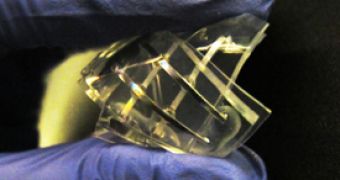Water and technology normally don't mix well, to put it lightly, but a group of researchers managed to turn the table on this fact and develop a memory device that actually works very well in wet environments.
As end-users know, the easiest way to destroy an electronic of any kind is to pour some water on it in such a way that it seeps into the circuitry.
Granted, there are some exceptions, but this is only because they are made with an enclosure that is not permeable.
What the scientists from North Carolina State University developed, however, was not some new way of shielding against wet environments, but a piece of hardware that is meant to work in wet environments.
This was made possible because, instead of rigid, brittle materials, the memory device is soft and easy to bend, built out of gallium and indium metals set into water-based gels.
The memory solution is not yet optimized to hold that much memory, but it still has great potential because of its biocompatibility.
In other words, the scientists invented something that more or less imitates the human brain.
“We’ve created a memory device with the physical properties of Jell-O,” says Dr. Michael Dickey, an assistant professor of chemical and biomolecular engineering at NC State and co-author of a paper describing the research.
“Our memory device is soft and pliable, and functions extremely well in wet environments – similar to the human brain.”
Since it works in moist, it can finally allow for interfacing between biological systems (tissues, enzymes) and electronic ones.
“These properties may be used for biological sensors or for medical monitoring,” Dickey says.
Those that want to get better acquainted with the technical aspects of the invention need only drop by this page or read the paper “Towards All-Soft Matter Circuits: Prototypes of Quasi-Liquid Devices with Memristor Characteristics,”

 14 DAY TRIAL //
14 DAY TRIAL //